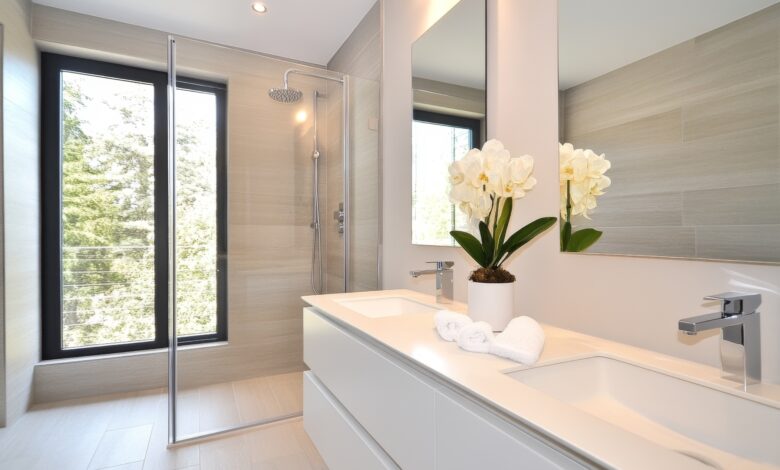Soundproof Wall Panels for Busy Homes

Noise is one of those things that can slowly wear away at your sense of calm without you even realising it. Whether it’s the steady hum of traffic outside, the sounds of neighbours next door, or the general clamour that comes with family life, unwanted noise can make it much harder to relax and unwind at home. For many households, especially those living in cities or in older properties with thin walls, tackling noise has become just as important as choosing a new colour scheme or adding stylish furniture.
One of the smartest and most effective ways to reduce noise is to use soundproof wall panels. These panels are not only practical but can also look incredibly stylish, bringing texture and depth to your interiors while working quietly in the background to soften the daily racket.
Why Soundproofing Matters at Home
When you spend more time at home, you quickly realise how much noise can affect your day-to-day life. Working from home, looking after young children, or simply trying to sleep in a noisy area can all be a challenge when thin walls let every sound travel. Even everyday activities like watching TV or playing music can become an issue if you’re worried about disturbing the rest of the household or next-door neighbours.
Soundproofing a home is about controlling how sound travels through walls, ceilings and floors. Wall panels designed for acoustic performance help absorb sound waves, stopping them from bouncing around your rooms and escaping through thin walls. They also help to dampen echoes inside a space, which is why they’re so popular in open-plan homes where hard surfaces can make sounds feel amplified.
How Soundproof Wall Panels Work
Unlike decorative panelling alone, soundproof panels are made using materials that absorb or block sound energy. They often combine dense core layers with soft, porous surfaces that soak up sound waves rather than letting them bounce back into the room.
Some panels are designed to be hidden behind decorative finishes, while others make a design statement in their own right. Slatted timber panels backed with acoustic felt, upholstered panels with soft fabric, or specially shaped 3D panels can all help tackle noise while adding a sense of warmth and depth to your walls.
Where to Use Soundproof Wall Panels
One of the best things about acoustic panels is how flexible they are. In a busy household, you can fit them in the areas where they’ll make the biggest difference. For many people, that’s bedrooms where restful sleep is essential, or living rooms where you want to enjoy music and films without disturbing other parts of the house.
Open-plan kitchens and dining areas can benefit too. Large spaces with hard floors and minimal curtains often suffer from echo, which can make conversation feel strained. Fitting panels along one or two walls helps absorb the excess sound, making the space feel cosier and calmer.
Home offices are another place where panels come into their own. If you’re on video calls throughout the day, soundproof panels help keep your voice clear and reduce background noise, creating a more professional environment.
Stylish Options to Suit Your Home
It’s a common misconception that soundproof panels have to look like industrial foam stuck to the wall. These days, there are endless stylish options that double up as interior features. Slatted wood panels are particularly popular in modern homes. They combine vertical timber strips with an acoustic backing material, creating a Scandinavian feel that works beautifully in bedrooms, lounges and hallways.
Upholstered panels add softness and a luxury finish, making them ideal for bedrooms or media rooms. They come in different shapes and fabrics, from subtle neutrals to bold statement colours, so they can be matched to your décor.
3D wall panels are another option. Their unique shapes and ridged surfaces help scatter sound waves, while also acting as eye-catching design elements. For homes that need to balance practicality with style, they’re a clever way to add texture without looking overtly like soundproofing.
Combining Soundproof Panels with Other Solutions
While acoustic panels on their own can make a noticeable difference, they work best as part of a wider approach to soundproofing. Combining them with thicker carpets or rugs helps reduce noise transmission through floors. Heavy curtains and blinds help block noise coming in through windows, and adding acoustic seals around doors can stop sound leaking from room to room.
In some cases, panels can be fitted as part of a wall build-up, hidden behind decorative wall panelling or painted finishes. This approach is common during bigger renovations where you’re replacing plasterboard or adding new walls. In these cases, acoustic insulation boards can be layered into the wall cavity alongside decorative panels on the surface, creating a double layer of protection against noise.
Tiles and Panels: A Thoughtful Pairing
Many homeowners worry about the hard surfaces in bathrooms and kitchens when it comes to noise. While tiles are practical and beautiful, they can bounce sound around, especially in larger spaces. In rooms like these, combining tiled areas with acoustic panelling on one or two walls can help soften echoes.
For example, a kitchen diner with a fully tiled splashback might benefit from slatted acoustic panels on the opposite wall. In a bathroom, moisture-resistant acoustic panels can add a modern, spa-like feel while helping to dampen sound. Thoughtful choices like these help balance practicality with comfort, proving that tiles and panels can work hand-in-hand to make a home feel more peaceful.
Easy to Maintain and Long-Lasting
People sometimes assume that soundproof panels are fragile or hard to look after, but many modern products are designed with busy homes in mind. Slatted wood panels just need the occasional dusting, while upholstered panels often come with removable covers that can be cleaned or replaced if they show signs of wear. Many acoustic panels are made using durable, sustainable materials too, which is a bonus if you’re conscious of your home’s environmental footprint.
Value Beyond Noise Reduction
Beyond their acoustic benefits, wall panels bring other advantages too. They can hide uneven walls, cover up old plasterwork and even help insulate a room. In older properties where original walls are often less than perfect, panels can be a practical way to refresh a space while adding texture and warmth.
When done well, they can also add to the overall value of your home. More buyers are looking for houses that feel well-built and comfortable to live in, especially in city areas where noise is a big concern. A beautifully panelled feature wall that also softens sound can be an unexpected selling point.
Finding the Right Installer
Installing soundproof panels is a relatively straightforward job for professionals, but getting the positioning right is important. A good installer will be able to assess where panels will make the biggest difference and how to fix them securely without damaging your walls.
If you’re fitting panels as part of a wider room redesign, it’s worth working with an interior designer or experienced decorator who understands how to blend them with your colour scheme, flooring and other finishes. This ensures your panels don’t just work well but also look like they belong.
Making a Busy Home Feel Calmer
For families, couples or housemates sharing busy homes, finding pockets of peace can feel like a luxury. Soundproof wall panels might not be the first thing you think of when planning a makeover, but they can transform how your home feels. From restful sleep to more private conversations, better acoustics can make your home feel calmer, more comfortable and better suited to modern living.



